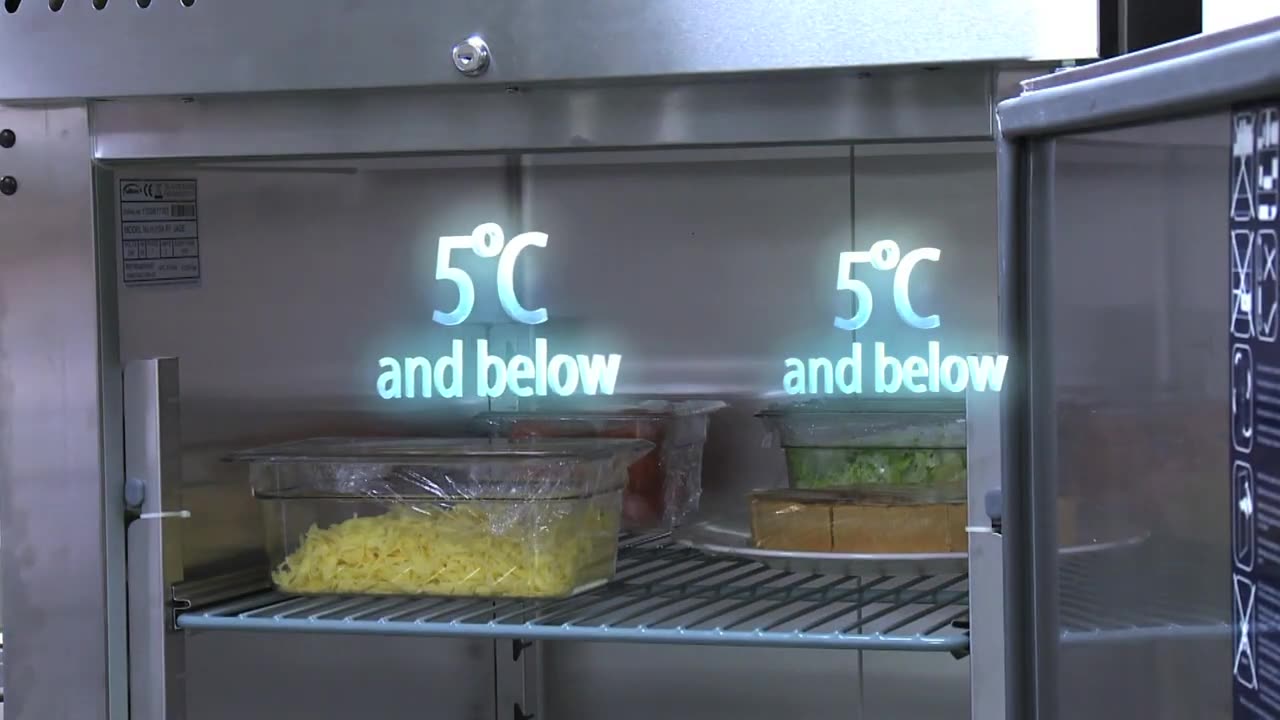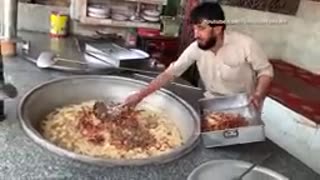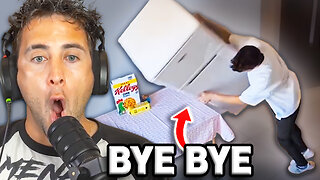Premium Only Content

Food safety coaching (Part 7)_ Chilled storage and display
### **Food Safety Coaching (Part 7) – Chilled Storage and Display**
Proper chilled storage and display are critical for maintaining food safety, especially for perishable and high-risk foods. Storing and displaying food at the correct temperature slows bacterial growth and preserves freshness, ensuring food remains safe for consumption.
---
### **Why Chilled Storage and Display Matter**
1. **Prevents Bacterial Growth:**
- Harmful bacteria thrive in the "danger zone" between **5°C and 63°C**. Keeping food below 5°C inhibits bacterial multiplication.
2. **Preserves Quality:**
- Proper chilling maintains food’s texture, taste, and nutritional value.
3. **Reduces Waste:**
- Slows spoilage, extending the shelf life of food.
---
### **Best Practices for Chilled Storage**
#### **1. Maintain the Right Temperature**
- Refrigerators should operate at **≤5°C**.
- Use a **thermometer** to monitor temperature regularly.
- Freezers should operate at **-18°C or below** for frozen foods.
#### **2. Store High-Risk Foods Correctly**
- Place perishable items (e.g., meat, poultry, dairy, seafood) in the coldest part of the fridge.
- Keep cooked and ready-to-eat foods separate from raw foods to prevent cross-contamination.
#### **3. Use Airtight Containers or Wraps**
- Store food in sealed containers or wrap them tightly to prevent moisture loss and contamination.
#### **4. Avoid Overloading the Fridge**
- Overcrowding prevents cold air from circulating, leading to uneven cooling.
#### **5. Organize Based on Food Type**
- Place raw meat, poultry, and seafood on the bottom shelf to prevent juices from dripping onto other foods.
- Store ready-to-eat foods and leftovers on the top shelves.
#### **6. Label and Date Stored Food**
- Mark containers with the date of storage to track freshness.
- Follow the **First In, First Out (FIFO)** principle to use older food first.
---
### **Best Practices for Chilled Display**
#### **1. Maintain Display Temperatures**
- Ensure chilled display units keep food at **≤5°C**.
- Use built-in thermometers to monitor and adjust the temperature as needed.
#### **2. Regularly Check Food Temperatures**
- Use a probe thermometer to verify food temperatures, especially for prepackaged or bulk items.
#### **3. Avoid Overfilling Display Units**
- Allow cold air to circulate around the food to maintain consistent temperatures.
#### **4. Rotate Stock Frequently**
- Replace displayed food with fresh stock regularly to maintain quality and safety.
- Remove expired or potentially unsafe items immediately.
#### **5. Protect Food from Contamination**
- Use sneeze guards, covers, or lids to shield food from physical contamination.
- Ensure packaging is intact for prepacked items.
#### **6. Monitor and Clean Display Units**
- Clean display units regularly to prevent the buildup of spills, debris, or ice.
---
### **Foods That Require Chilled Storage and Display**
- **High-Risk Foods:**
- Raw and cooked meat, poultry, and seafood.
- Dairy products such as milk, cheese, yogurt, and cream.
- Ready-to-eat foods like sandwiches, salads, and deli meats.
- Pre-cut fruits and vegetables.
- **Packaged Foods with “Keep Refrigerated” Labels:**
- Always follow manufacturer instructions for chilled storage.
---
### **Common Mistakes to Avoid**
1. **Storing Hot Food Directly in the Fridge:**
- Hot food raises the internal temperature of the fridge, putting other items at risk. Cool hot food quickly before refrigerating.
2. **Ignoring Temperature Fluctuations:**
- Regularly check fridge and display unit temperatures to ensure they are within safe limits.
3. **Overcrowding Storage Areas:**
- Crowded fridges and displays block airflow, leading to uneven cooling.
4. **Relying on Visual Inspections Alone:**
- Food may appear fine but could be unsafe if stored at the wrong temperature.
---
### **Key Tips for Safe Chilled Storage and Display**
- Use separate fridges or sections for raw and ready-to-eat foods.
- Regularly service and maintain refrigeration and display equipment.
- Train staff on proper handling, storage, and display practices.
- Keep records of temperature checks for quality assurance.
---
### **Key Reminder**
Proper chilled storage and display are essential for food safety. Always prioritize maintaining appropriate temperatures, preventing cross-contamination, and ensuring equipment functions effectively.
Would you like specific advice on chilled storage for a particular type of food or scenario?
-
 20:24
20:24
HSESafetyInformation
7 months agoKABULI PULAO RECIPE - Original 40+ KG Afghani Meat Pulau Prepared - Street Food Qabili Plav Recipe_2
35 -
![Mr & Mrs X - Feminism, Family, Federal Reserve, The Rise Of The [DS] Agenda](https://1a-1791.com/video/fwe2/12/s8/1/6/F/R/n/6FRnz.0kob-small-Mr-and-Mrs-X-Feminism-Famil.jpg) 58:10
58:10
X22 Report
9 hours agoMr & Mrs X - Feminism, Family, Federal Reserve, The Rise Of The [DS] Agenda
181K50 -
 16:37
16:37
Robbi On The Record
1 day ago $7.77 earnedThe Theater of Manufactured Outrage - When Left and Right Dance for the Same Puppet Master
37.8K37 -
 31:27
31:27
Stephen Gardner
20 hours ago🔥BOMBSHELL: Mortician EXPOSES Charlie Kirk Autopsy - The Key Evidence EVERYONE Missed!
130K285 -
 30:00
30:00
BEK TV
3 days agoGUT HEALTH AND THE POWER OF KIMCHI WITH KIM BRIGHT ON TRENT ON THE LOOS
61.2K6 -
 LIVE
LIVE
IamNibz
10 hours ago $2.60 earned6-7 Minecraft Stream
121 watching -
 36:53
36:53
daniellesmithab
4 days agoSupporting Alberta's Teachers and Students
136K26 -
 1:25:28
1:25:28
VapinGamers
5 hours ago $2.40 earnedTools of the Trade - EP07 Lights, Camera, Go Live with Joker - !rumbot !music
30K5 -
 14:38
14:38
Nikko Ortiz
1 day agoADHD vs Autism
98.4K53 -
 LIVE
LIVE
TonYGaMinG
6 hours ago🟢 INDUSTRIA 2 PLAYTEST / ACTIVE MATTER LATER
78 watching
